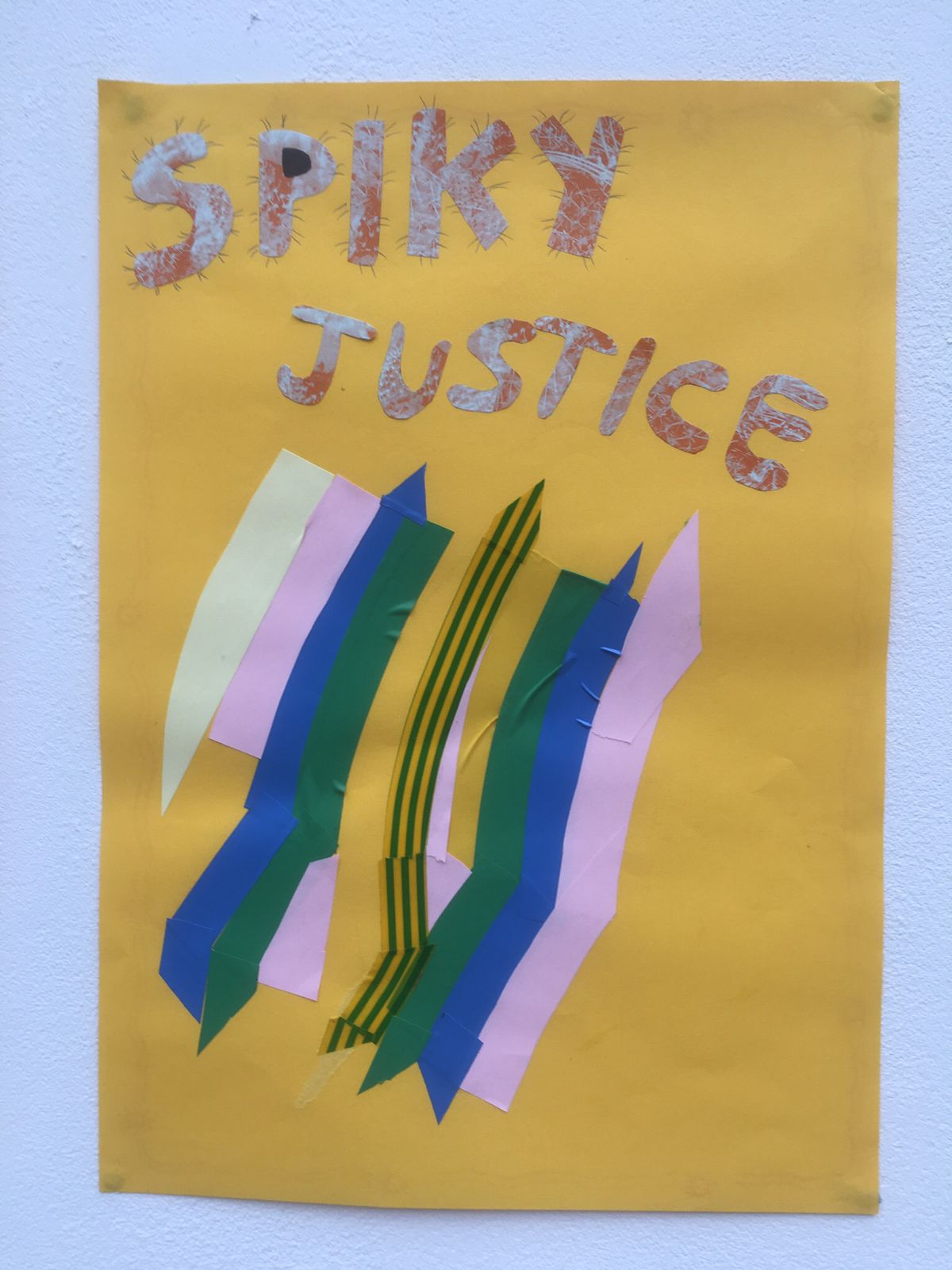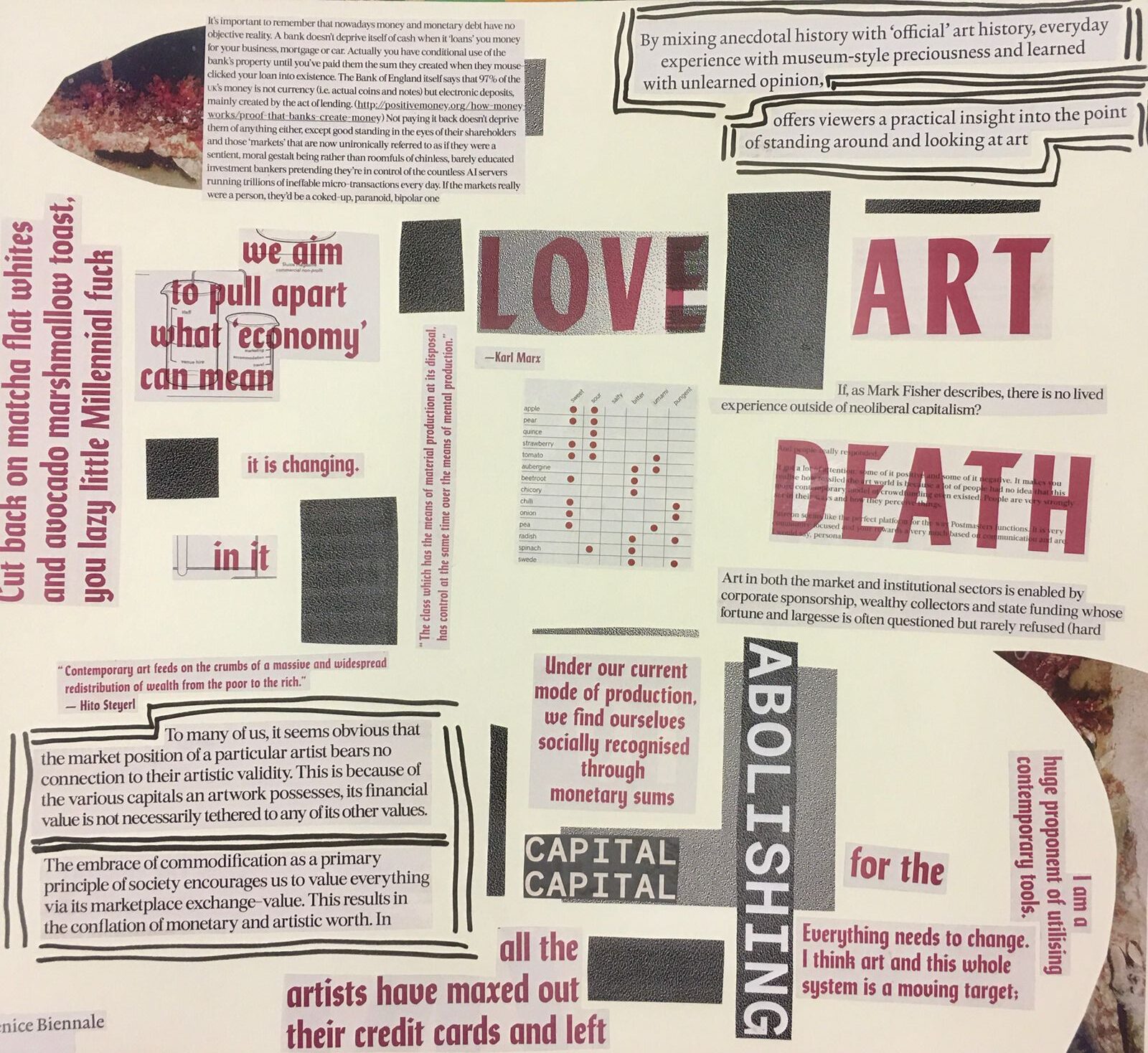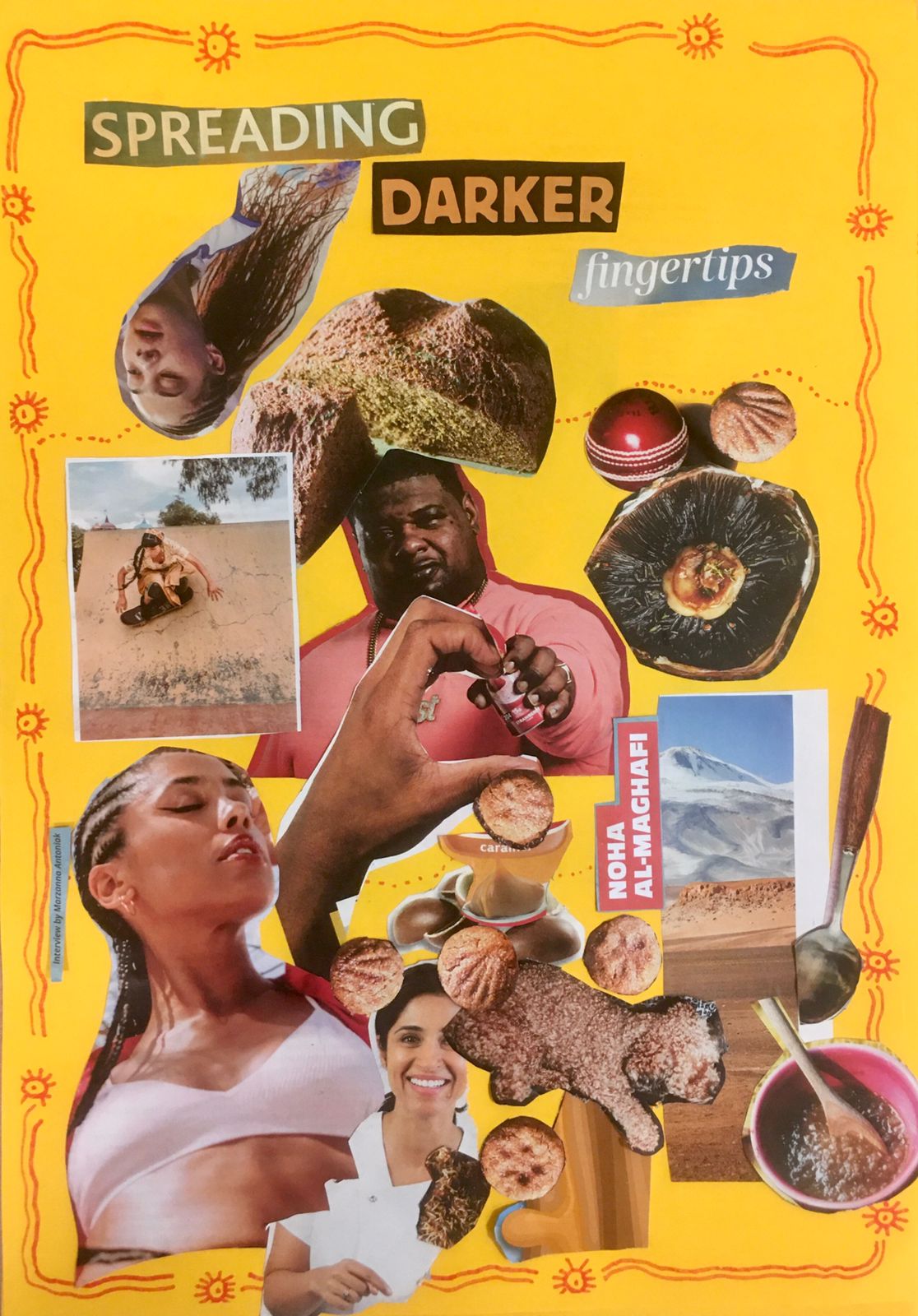
By Tanvir Alim about the workshops following the ‘Sticky, Luminous Fruit For All!’ project at Tramway and Kelvingrove Museum –
The narrative that was bouncing back and forth during the workshop series was about the politics of food; What memories do foods hold for us and what memories do we feel? How does the food we eat come to our table? Who eats what?
I had visited the Jasleen Kaur exhibition ‘Alter Altar’ before and this time we held a poster making workshop. The exhibition contained a series of installations, musical sculptures and she explores ideas of memory and the cultural resonances of everyday materials and objects. The workshop took place in conjunction with the exhibition. We had a preparation meet for the poster making workshop where we discussed about climate change in different regions of the world. There were stories about avocado, deprivation of water sources in West Bank and many others that were offered for the visitors to think about in the poster making process.
It was a huge white cube of Tramway; people could walk around and experience the exhibition and they could make a poster if they want. Along with kinetic sculptures, the exhibition also had sound installation which gave an ambiance to the workshop. About her work, Kaur mentioned that she learned devotional singing on a harmonium from her dad, but since then, she thought of her singing practice as a decolonial practice which was a striking statement for me.
One of the key concepts of the workshop series grabbed my attention earlier where it addressed the issue of underpaid workers who are producing food that we see in in the grocery. They come from different zones, but do we really know about the labour behind what we see under the bright lighting of the stores?
During the workshop the participants could also discuss about their ideas of climate change and many of them came sharing various thoughts. There were mothers with their school going children, toddlers with their father and many others. The diversity of people in the Rumpus Room workshops always amaze me in each of these events. There were posters about wellbeing, inclusive reform, climate justice and renewable energy.

The next workshop in the Kelvingrove museum was for ‘Our Shared Cultural Heritage’ and it took place in the Education Suite located on the ground floor of the museum. Among many other activities of OSCH, this was one of the highlights and very well attended. Two young people from the OSCH team, Miriam and Sara, assisted and contributed as well.
In that early morning, with gloomy Glasgow sky, many other volunteers started arriving in that room as their reporting point and all of them were chatting about different experiences. Many of them were new to the university and were talking about how overwhelming their experience is. There were discussions around cricket and the first poster came out during all these conversations when someone wrote ‘FREE PALESTINE’. This was the first day of the ethnic cleansing there in 2023.
Soon the workshop started and like many other rumpus room events, there were parents coming with very small children. I always find it amusing to see the young participants and their work who barely can hold a crayon. There were college materials from different magazines and newspapers, and I was hopping around the room to see who is doing what. A kid made a collage on welcoming people to the museum while his sister was looking for a picture for a window for the house she is making. Another toddler made a poster with his father saying Taste of the world with many different dishes in the poster.
People were making collages by cutting new images, texts and putting them with glue and the charming part in it is using hands and fingers, turning the pages, and cropping the images. What is very common in these workshops are how proud the visitors feel afterwards when they are done with the collage. Many of them take it away with them and probably place it in their room and remembers the experience for a long time. One poster particularly grabbed my attention saying LIBERATION FOR ALL THE OPPRESSED.
After the workshop I went upstairs to see a video screening. It was about decolonizing museum and a video where groups of young people came together and developed a manifesto. While returning home, I was looking into the artefacts around and was wondering to read some of the captions here and there. The objects in the museum are often from different colonies and they are collected by the officials who were working in those geographic locations. Some of them are donated by these collectors. Still, some of the captions read ‘The British Museum’s wonderful collection is owned by all the people of Britain’. Are they really owned by the people of Britain?

There were many discussions that took place during all the workshops about resources, labour, care, wellbeing, justice, freedom, and decolonization. Many of it seems bouncing back and forth among the civilians but not the authorities and the decision makers. No matter if it’s trans rights or ethnic cleansing or the labour exploitation, decolonization is the ornament to decorate these discussions. The symbolic interpretation of this war, ownership of the artefacts or exploitation of labours in the global south does not really change at the end of the day. The only hope that remains is like the drawings made by the toddlers visiting these events. Like their drawings, perhaps they will be able to imagine a world where there will not be any dichotomy of ‘haves’ and ‘don’t haves’